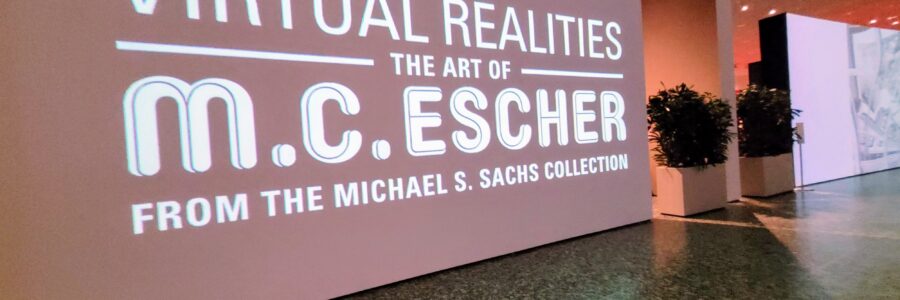
Virtual Realities: The Art of M.C. Escher from the Michael S. Sachs Collection Now Open at the MFAH
Houston debuts this major retrospective of over 300 works on paper and more than 100 of the artist’s carved wood blocks, constructed objects and working tools

The Museum of Fine Arts, Houston has opened the largest and most comprehensive exhibition of works by M.C. Escher ever held, from the collection of Michael S. Sachs, who gathered works over 50 years and acquired ninety percent of the Escher estate in 1980.
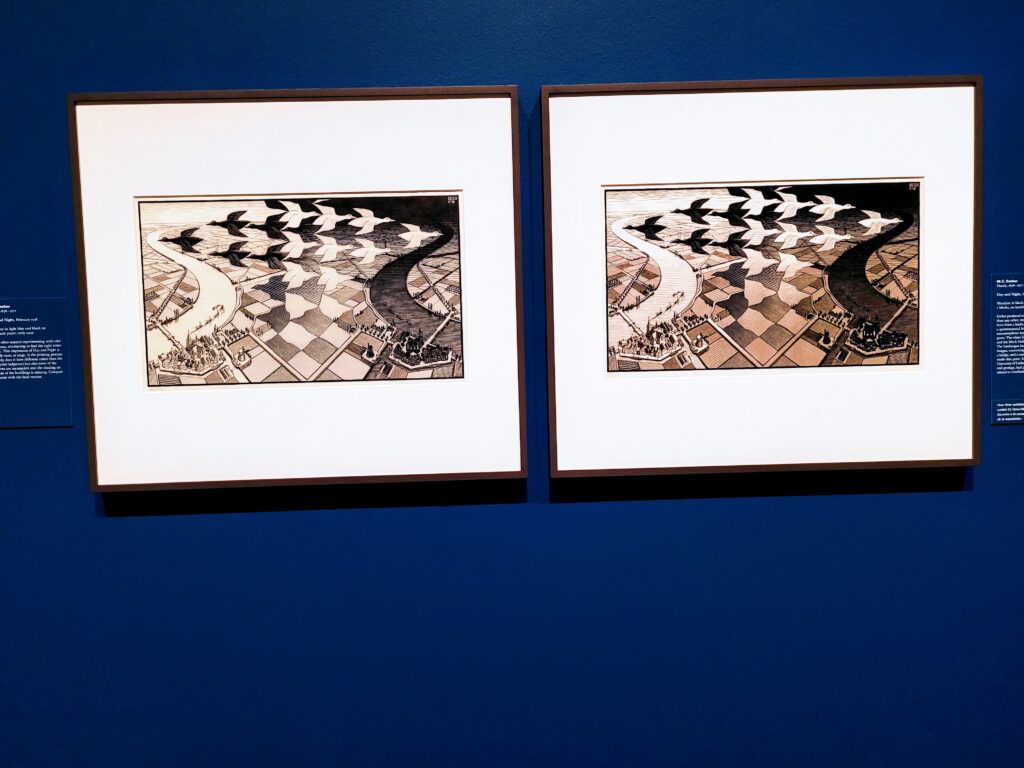
The exhibition will include more than 400 prints, drawings, watercolors, printed fabrics, constructed objects (such as the Angels and Devils
sphere), wood and linoleum blocks, lithographic stones, sketchbooks, and the artist’s working tools. Organized by the MFAH, the exhibition will be on view through September 5, 2022.

Maurits Cornelis Escher (Dutch, 1898-1972), popularly referred to as M.C. Escher, is known internationally for his self-described “mental images,” which connect to mathematics and various branches of science. Considered a “one-man art movement,” he remained outside of the art establishment. Escher was heralded in the psychedelic era of the 1960s and 1970s and is treasured today for his mind-bending works.

“The Museum of Fine Arts, Houston is pleased to present this broad selection of works by M.C. Escher, drawn from the most extensive Escher collection in the world,” said Gary Tinterow, Director and Margaret Alkek Williams Chair, Museum of Fine Arts, Houston. “Escher is an artist who defies characterization. His singular, sometimes unsettling works, with their orchestration of multi-dimensional alternate realities, have rightfully become icons of the 20th century.”
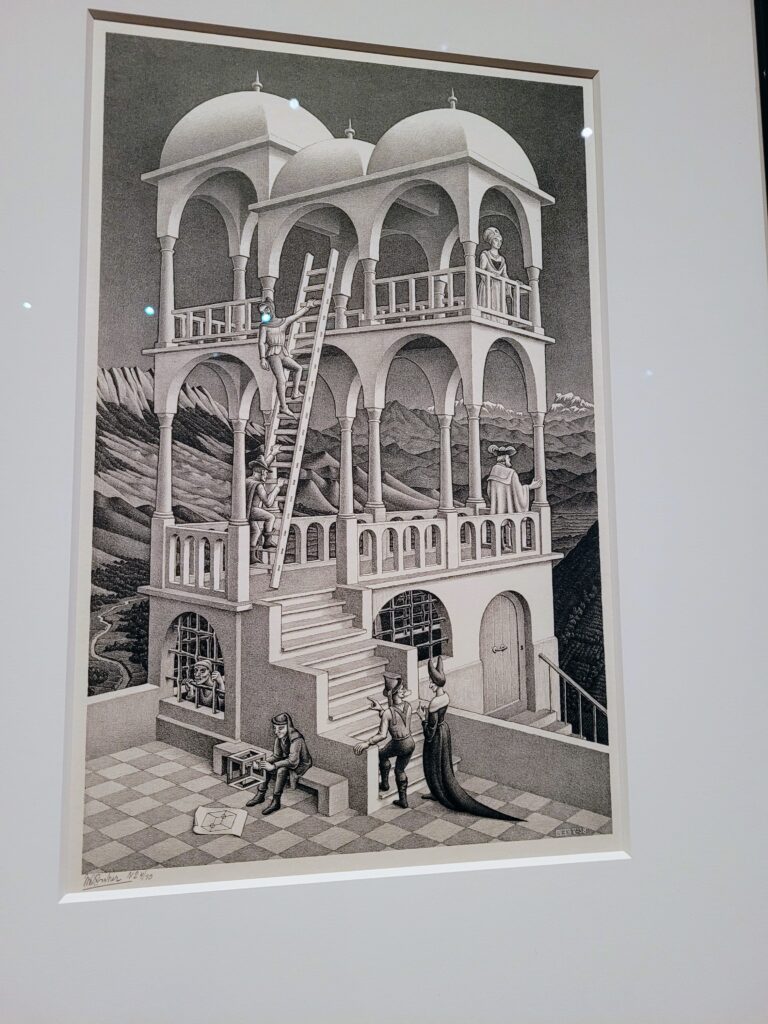
Evolution of Escher Imagery: Over his 50-year artistic career, Escher’s imagery evolved from realistic observations of the world around him to inventions from his own imagination that explored the relationships between art and science, order and disorder, and logic and irrationality.
Escher once commented: “You have to retain a sense of wonder, that’s what it’s all about.”

Throughout the 1920s and 1930s, Escher was preoccupied with the Italian landscape and the architecture of Italian cities.
It was during this period that he began experimenting with perspective in his work. The patterned, color tiles from Moorish architecture he saw in Spain in 1922 and 1936 were transformed in Escher’s hands from geometrical symmetries to identifiable human figures, angels, and other creatures, such as insects, birds, fish, and reptiles.
In Sky and Water I (1938), Escher’s use of metamorphosis evolves fish into birds, and vice versa, in a seamlessly interlocking, seemingly infinite, pattern. Space that evolves from two- to three dimensions is also an important theme for the artist.
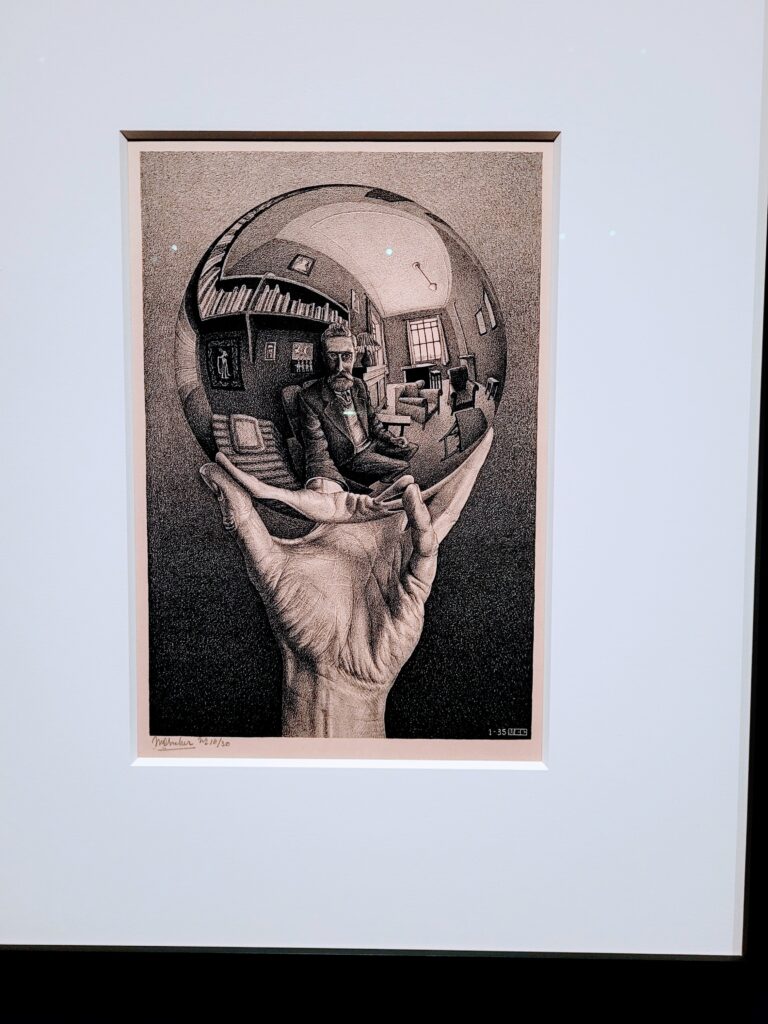
In Reptiles (1943), a salamander escapes the paper it is drawn upon, then re-enters the sheet on the other side. In Hand with Reflecting Sphere (1935) and Magic Mirror (1946), the effect of the globe and mirror reflections creates two co-existing worlds in time and place. Included in this exhibition will be the never-ending tessellating cycle Metamorphosis III (1939–68), Escher’s largest print, more than 22 feet in length and accompanied by its 31 woodblocks.

“By spanning Escher’s entire career, this extraordinary exhibition explores Escher’s detailed thought process. It reveals, in a way, the magic behind the final prints, with the inclusion of preparatory drawings and progressive printing proofs as evidence of his working process. His meticulous manner extends to printing all of his woodcuts by hand with the back of a spoon, instead of a press,” said Dena M, Woodall, Curator, Prints and Drawings, MFAH.

Escher’s Multiple “Modern” Preoccupations: The exhibition will be organized chronologically as well as thematically, from portraiture and his student and early work to his imagery from Italy. It will then branch out into Escher’s multiple “modern” preoccupations: tessellations, metamorphoses, two dimensions into three-dimensions, reflecting worlds, Platonic solids, spirals in space, impossible buildings, and approaches to infinity. Interactive auxiliary rooms, where visitors may play with optical illusions, will accompany the exhibition.
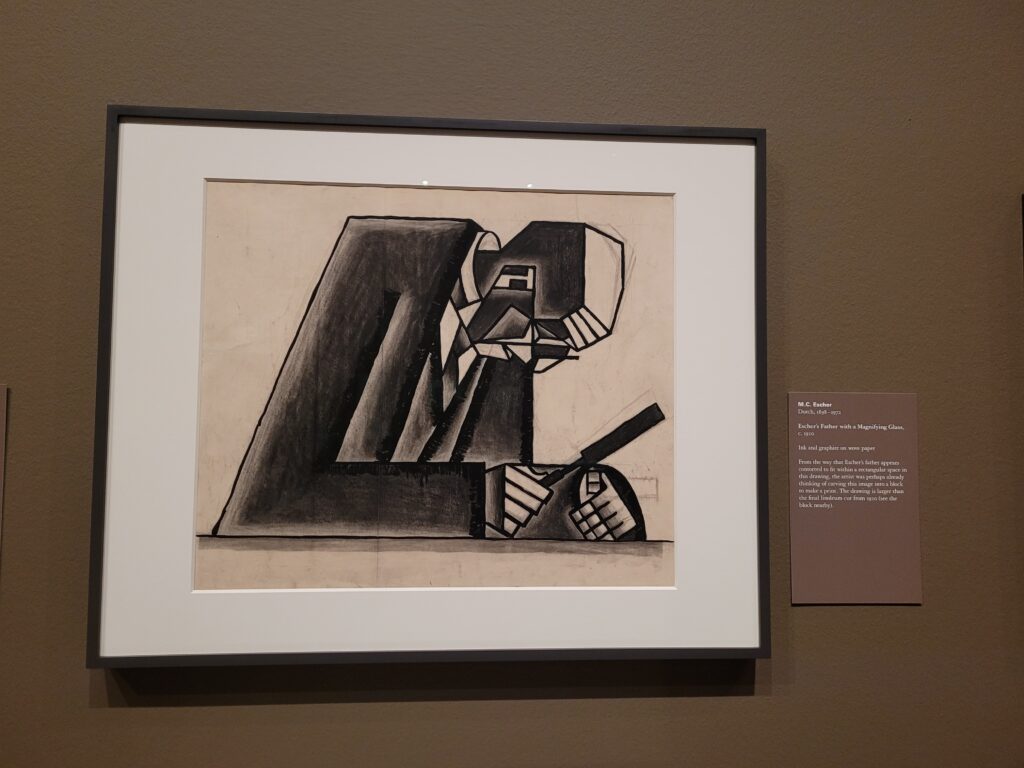
Related Programming: M.C. Escher at Le Jardinier MFAH
Le Jardinier has created a special menu inspired by the many complex and monochromatic artworks of M.C. Escher, these items are available while the exhibition is on view at the museum through September 5th and explore the ideas of mirror images, infinity and duality.
Creations include a cocktail titled Our Checkered Past, designed by Beverage Director Juan Carlos Santana and Head Bartender Max Labesse. A combination of Puerto Rican Rum, Pernod pastis, coconut, pineapple and lime, the beverage takes inspiration from the mind-bending artist and combines a touch of French perspective. Rum and Absinthe serve as the catalyst for this fantastic voyage and are brought into balance with the flavors of coconut and pineapple.
In addition, Le Jardinier will also serve a savory dish: Pan-Fried Scallops, Cauliflower Fondant, Black Currant Coulis and Tuile Noire, created by Chef Alain Verzeroli and Chef Felipe Botero. To round out the Culinary Canvas creations, Executive Pastry Chef Salvatore Martone and Chef Tiffani Ann Gkaris designed the specialty Black & White Sesame Seeds Praline dessert with raspberry reduction and Oreo sable.
FOR TICKETS: Visit www.mfah.org/exhibitions/virtual-realities-art-of-mc-escher.
Photos: V. Sweeten